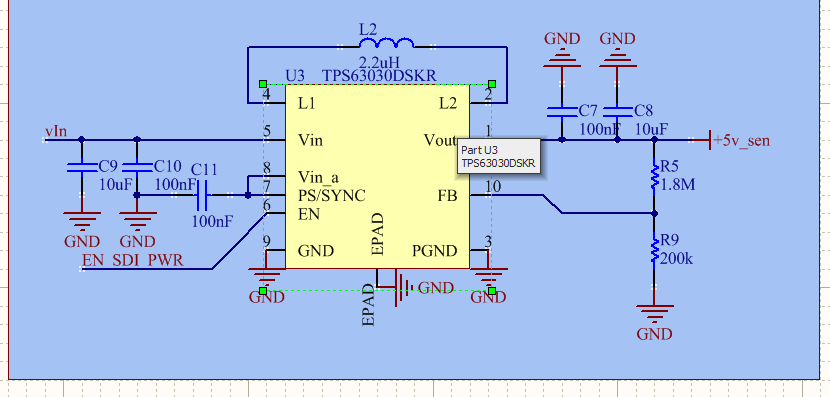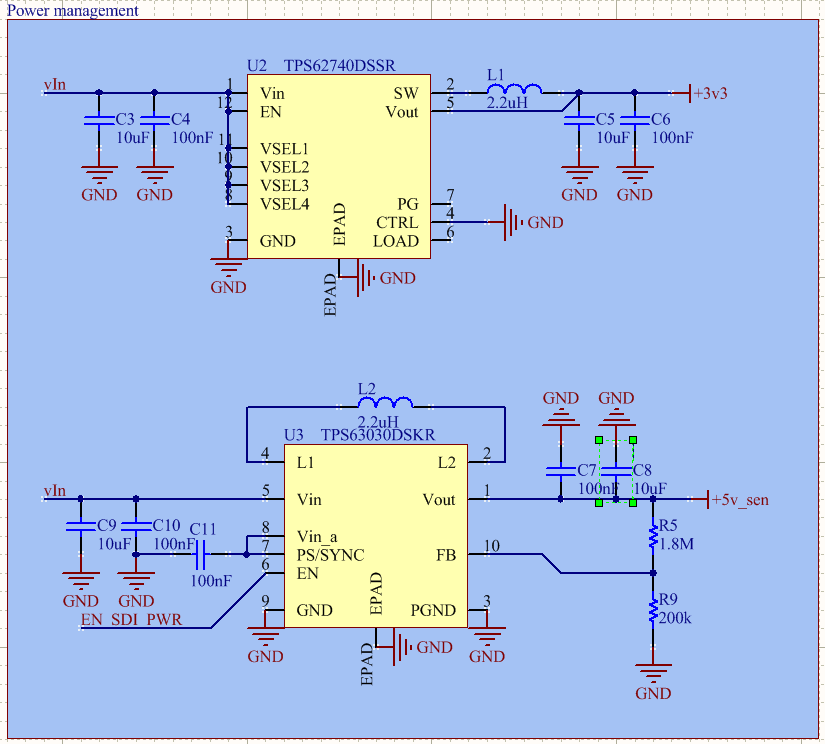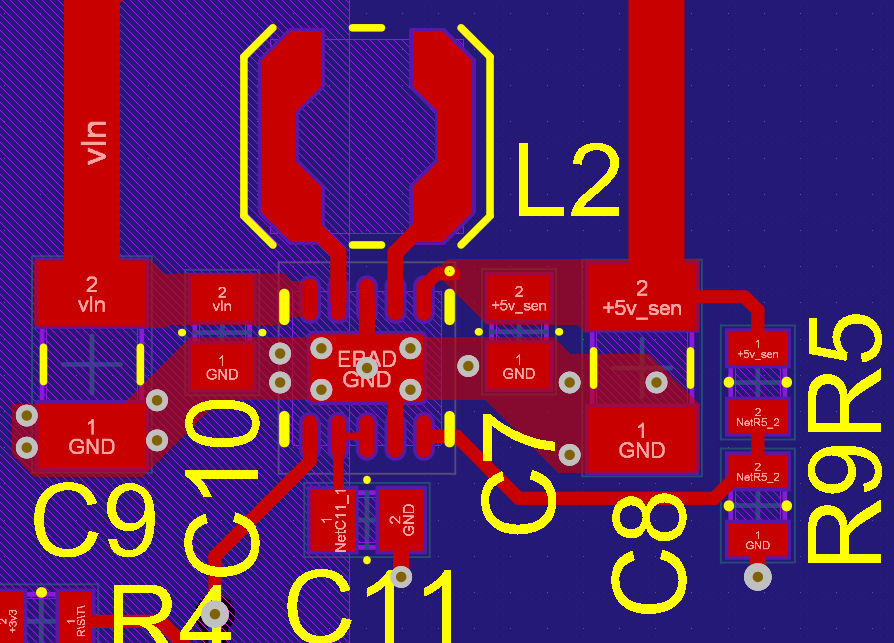Other Parts Discussed in Thread: TPS62740
Hello, i have the following circuit
which is pretty much a copy of the one in the datasheet, with a small difference, the enable line is externally driven, in this case an atmega328p, interestingly when activating the en pin, not only the signal didn't activate
the voltage on the line was 0.8v, when shorting it to a 3v3 rail it started working, so i took a multimeter and measured the current going into EN pin, turned out to be around 50ma!
moreover, this is not an isolated case, i have repeated the measurements on 4 devices, and in all of them the same happens
normally i'd think this means a perforated fet, however i can be sure the voltage never went above 4.5v on any pin, hence being well within specification
the truth is that im quite out of ideas, this is an excedengly simple circuit yet it's giving a pretty surprising problem
any help is appreciated






